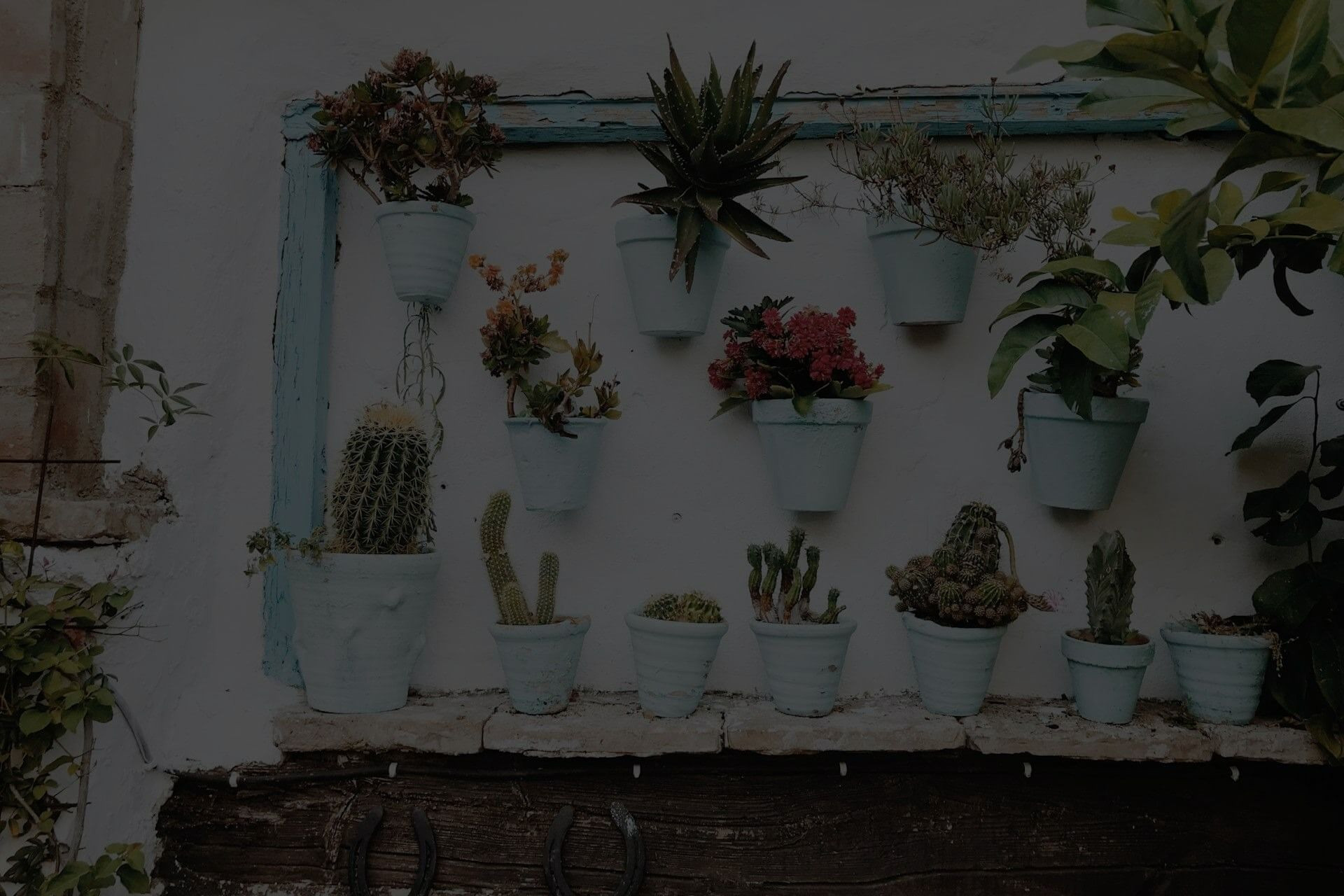Introduction to Garden Roses
Garden roses are a popular choice for many gardeners due to their beauty, fragrance, and versatility. With proper care, garden roses can thrive and provide years of enjoyment. However, they do require some maintenance to keep them healthy and looking their best. In this article, we will cover everything you need to know to care for your garden rose, from planting to pruning and beyond.
Table of Contents
Choosing the Right Location
Before you even bring your garden rose home, it's essential to choose the right location. Garden roses need full sun to partial shade, depending on the variety. They also require well-draining soil and a spot with good air circulation. Avoid planting your rose in a low-lying area where water may collect, as this can lead to root rot. If your soil is heavy clay or sandy, amend it with organic matter like compost or well-rotted manure to improve drainage.
Planting Your Garden Rose
When planting your garden rose, dig a hole that is twice as wide and just as deep as the root ball. Add a layer of compost or well-rotted manure to the bottom of the hole, then gently place the rose in the hole. Fill in the hole with a mix of soil and compost, making sure to firm it in place as you go. Water well to settle the soil. If you're planting a bare-root rose, soak the roots in water for 24 hours before planting.
Watering Your Garden Rose
Watering is crucial for garden roses, especially during the first year after planting. Water your rose deeply once or twice a week, depending on weather conditions. Aim to provide about 1 inch of water per week, either from rain or irrigation. Avoid getting water on the leaves or flowers to prevent disease. Instead, water at the base of the plant, allowing the soil to absorb the water.
Fertilizing Your Garden Rose
Fertilizing your garden rose will promote healthy growth and blooming. Feed your rose with a balanced fertilizer (10-10-10) in early spring, following the manufacturer's instructions. You can also add a rose-specific fertilizer for extra nutrients. Avoid over-fertilizing, as this can lead to weak growth and fewer blooms.
Pruning Your Garden Rose
Pruning is essential for garden roses to maintain their shape, promote healthy growth, and encourage blooming. Prune your rose in late winter or early spring, removing any dead, diseased, or damaged branches. Cut back canes to about 12-18 inches from the ground, making a 45-degree angle cut just above a bud eye. Remove any suckers (shoots growing from the base of the plant) and deadheading (removing spent blooms) to encourage more flowers.
Pest and Disease Management
Like any plant, garden roses are susceptible to pests and diseases. Keep an eye out for common issues like aphids, whiteflies, and spider mites. Use organic or chemical controls as needed to prevent infestations. Regularly inspect your plant for signs of disease like black spot, powdery mildew, or rust. Treat fungal diseases with a fungicide, and remove any infected leaves or stems to prevent the spread of disease.
Mulching and Companionship
Mulching around the base of your garden rose can help retain moisture, suppress weeds, and regulate soil temperature. Use a 2-3 inch layer of organic mulch like wood chips or bark, keeping it a few inches away from the base of the plant. Consider planting companion plants like lavender, rosemary, or marigolds around your rose to deter pests and add visual interest.
Winter Care
In colder climates, garden roses need protection from harsh winter weather. After the first frost, stop watering and fertilizing your rose. Cut back canes to about 12-18 inches from the ground, and apply a layer of mulch or straw to protect the roots. In areas with extreme cold, consider wrapping the plant in burlap or a rose cone to protect it from wind and frost.
Common Problems and Solutions
Even with proper care, garden roses can encounter problems. Here are some common issues and solutions:
- Yellowing leaves: Overwatering or underwatering. Check soil moisture and adjust watering schedule accordingly.
- No blooms: Lack of sunlight, poor soil quality, or inadequate fertilization. Ensure your rose receives at least 6 hours of direct sunlight, amend soil with organic matter, and fertilize regularly.
- Black spot: Fungal disease. Remove infected leaves, improve air circulation, and treat with a fungicide.
- Pests: Inspect your plant regularly, and use organic or chemical controls as needed.
By following these guidelines, you'll be well on your way to growing a healthy, thriving garden rose. Remember to be patient, as garden roses take time to establish and reach their full potential. With proper care and attention, your garden rose will provide years of beauty and enjoyment.
Frequently Asked Questions
What is a Garden Rose?
A Garden Rose is a type of rose plant that is specifically bred for indoor growing. It is a compact, bushy plant that produces beautiful flowers in a variety of colors. Garden Roses are known for their ease of care and ability to thrive in indoor conditions.
How do I choose the right Garden Rose for my home?
When choosing a Garden Rose, consider the amount of light your home receives. If you have a bright, sunny spot, look for a variety that requires full sun. If your home is more dimly lit, choose a variety that can tolerate partial shade. You should also consider the color and fragrance of the flowers, as well as the plant's growth habits and size.
How often should I water my Garden Rose?
Water your Garden Rose when the top inch of soil feels dry to the touch. Overwatering can be detrimental to the plant, so it's better to err on the side of caution. Check the soil daily, and water only when necessary. Reduce watering in the winter months when the plant is dormant.
What type of soil is best for my Garden Rose?
Use a well-draining potting soil that is specifically designed for indoor plants. Avoid using garden soil from your outdoor garden, as it can compact and prevent proper drainage. A mix with a pH between 6.0 and 6.5 is ideal for Garden Roses.
How much light does my Garden Rose need?
Most Garden Roses require at least 4-6 hours of direct sunlight per day. However, some varieties can tolerate partial shade. If you don't have a sunny windowsill, consider using grow lights to supplement the natural light.
What is the ideal temperature for my Garden Rose?
Garden Roses prefer daytime temperatures between 65-75°F (18-24°C) and nighttime temperatures around 55-65°F (13-18°C). Avoid placing your plant near heating or cooling vents, fireplaces, or drafty windows.
How often should I fertilize my Garden Rose?
Fertilize your Garden Rose every 2-3 weeks during the growing season (spring and summer) with a balanced, water-soluble fertilizer. Dilute the fertilizer to half the recommended strength to avoid burning the roots. During the dormant season (fall and winter), you can reduce fertilization to once a month.
How do I prune my Garden Rose?
Prune your Garden Rose in late winter or early spring, removing any dead, diseased, or damaged branches. Cut back the plant to about 6-8 inches from the soil to encourage new growth. You can also prune your plant to maintain its shape and promote bushy growth.
Why are the leaves on my Garden Rose turning yellow?
Yellow leaves on your Garden Rose can be caused by overwatering, underwatering, or a lack of nutrients. Check the soil moisture and adjust your watering schedule accordingly. You can also fertilize your plant with a balanced fertilizer to provide essential nutrients.
How do I propagate my Garden Rose?
You can propagate your Garden Rose through stem cuttings or division. Take 4-6 inch stem cuttings from the tips of the branches, remove lower leaves, and plant them in a pot filled with moistened soil. Keep the soil consistently moist and warm until roots develop. You can also divide the plant in the spring, making sure each division has at least three stems and a portion of the roots.
Can I grow my Garden Rose outdoors?
While Garden Roses are bred for indoor growing, you can grow them outdoors in a container. Choose a location with full sun to partial shade and well-draining soil. Protect your plant from extreme temperatures, wind, and frost.
How do I protect my Garden Rose from pests?
Check your plant regularly for signs of pests, such as spider mites, mealybugs, or aphids. Isolate infested plants, and treat them with insecticidal soap or neem oil. Keep your plant clean, and avoid overwatering, which can attract pests.
Why are the flowers on my Garden Rose not blooming?
Lack of blooms on your Garden Rose can be caused by insufficient light, inadequate fertilization, or root bound conditions. Check the light levels and fertilization schedule, and consider repotting your plant in the spring if it has outgrown its container.
Can I grow a Garden Rose from seed?
While it's possible to grow a Garden Rose from seed, it's not the most recommended method. Garden Roses are often hybrids, and their seeds may not produce plants with the same characteristics as the parent plant. It's better to purchase a established plant from a nursery or online retailer.
How long does it take for a Garden Rose to bloom?
Garden Roses typically bloom within 6-12 weeks of planting, depending on the variety and growing conditions. Some varieties may take longer to produce flowers, so be patient and provide optimal care.
Can I grow a Garden Rose in a hanging basket?
Yes, you can grow a Garden Rose in a hanging basket. Choose a variety with a trailing or cascading habit, and use a well-draining potting mix. Make sure the basket is large enough to accommodate the plant's mature size, and provide regular watering and fertilization.
Why are the stems on my Garden Rose leggy?
Leggy stems on your Garden Rose can be caused by insufficient light, overwatering, or a lack of pruning. Prune your plant regularly to encourage bushy growth, and provide sufficient light to promote strong stem development.
Can I divide my Garden Rose in the fall?
It's not recommended to divide your Garden Rose in the fall, as this can cause stress to the plant and make it more susceptible to disease. Divide your plant in the spring, when it's actively growing, to minimize stress and promote healthy growth.
How do I care for my Garden Rose during the winter?
During the winter, reduce watering and fertilization to once a month. Keep your plant in a cool, bright location, and avoid placing it near heating vents or fireplaces. You can also prune your plant in late winter to prepare it for the growing season.
Can I grow a Garden Rose in a terrarium?
While it's possible to grow a Garden Rose in a terrarium, it's not the most ideal environment. Garden Roses require good air circulation and may not thrive in the humid, closed environment of a terrarium. Consider growing your plant in a pot or hanging basket instead.
Why is my Garden Rose dropping its leaves?
Garden Roses may drop their leaves in response to stress, such as overwatering, underwatering, or extreme temperatures. Check the soil moisture and adjust your watering schedule accordingly. You can also fertilize your plant with a balanced fertilizer to provide essential nutrients.
Can I use Garden Rose flowers in arrangements?
Yes, you can use Garden Rose flowers in arrangements. Simply cut the stems at an angle, and place them in a vase with fresh water. You can also dry the flowers to preserve them for later use.
How long do Garden Roses typically live?
Garden Roses can live for several years with proper care. Some varieties may live for 5-10 years, while others may have a shorter lifespan. Regular pruning, fertilization, and pest management can help extend the life of your plant.
Can I grow a Garden Rose in a cold climate?
Garden Roses are typically hardy in USDA zones 5-9, meaning they can tolerate temperatures as low as -20°F (-29°C). If you live in a colder climate, consider growing your plant in a container that can be moved indoors during the winter, or choose a variety that is specifically bred for cold hardiness.
Indoor Plant Care A-Z
Adiantum Fragrans
Aechmea Blue Rain
Aechmea Fasciata
Aeschynanthus Marmoratus
Aeschynanthus Radicans Gesneriad
African Mask
African Spear
African Violet
Air Plant
Alocasia Amazonica
Alocasia Araceae
Aloe
Aloe Vera
Aloe Vera
Aloe Vera Barbadensis
Angel Wings Cactus
Anthurium Andraeanum
Anthurium Crystallinum
Arabian Coffee
Areca Palm
Aroid Palm
Arrowhead Ivy
Arum Lily
Asparagus Densiflorus 'Sprengeri'
Asparagus fern
Asparagus Setaceus
Aspidistra Elatior
Asplenium Antiquum
Asplenium Nidus
Athyrium Filix-Femina
Austrailian Ivy Tree
Austrocephalocereus Dybowskii
Austrocylindropuntia subulata
Azalea Plant
Baby Doll Ti
Baby Rose
Baby Tears
Baby Toes
Baby's Tears
Bamboo Palm
Banana Palm
Banana Plant
Banana Tree
Barbados Aloe
Begoniaceae Maculata
Bengal Fig
Benjamin Tree
Benjamin's Fig
Beringin
Bilbo Cactus
Bird Of Paradise
Bird's Nest Fern
Bird's Tongue Flower
Birds Nest Fern
Blue Pothos
Blue Rain Bromeliad
Blue Rain Plant
Blue Sansevieria
Blue Torch Cactus
Bonsai Ficus
Boston Fern
Boston Fern
Boy Flower
Brighamia insignis
Bromeliad
Buddha's Hand
Bunny Cactus
Burrageara Orchid X Oncidium
Burro's Tail
Butterfly Palm
Cabbage on a Stick
Cabeça-branca
Cactus
Caladium Lindenii
Caladium Magnificum
Calathea
Calathea Marantaceae
Calla Lily
Cambria
Cambria Orchid
Canna Leaved Strelitzia
Cape Jasmine
Cape Primrose
Cast Iron Plant
Cathedral Cactus
Cathedral Plant
Cereus Peruvianus
Ceropegia Woodii
Ceropegia Woodii 'Marlies'
Chain of Hearts
Chain of Pearls
Chamaedorea Elegans
Chinese Ape
Chinese Money Plant
Chinese PLant
Chinese Taro
Chlorophytum Comosum
Christmas Cactus
Christmas Kalanchoe
Cladophora
Cladophora Ball
Climbing Asparagus
Codiaeum Variegatum Var. Pictum
Coffea Rubiaceae Arabica
Coffee Bean
Coffee Plant
Common Purslane
Common Yucca
Cordyline Fruticosa
Corn Plant
Crab Cactus
Crane Flower
Crassula Arborescens
Crassula Hobbit
Crassula Ovata
Croton
Crystal Anthurium
Ctenanthe
Ctenanthe Pilosa Golden Mosaic
Curly Locks Cactus
Curtain Fig
Cycas Revoluta
Cylindrical Snake Plant
Date Palm
Day Flower
Delicious Monster
Devil's Ivy
Devil's Tongue
Devils Backbone
Dieffenbachia Araceae
Donkey's Tail
Dracaena
Dracaena Fragrans
Dracaena Fragrans Golden Coast
Dracaena Fragrans Janet Craig
Dracaena Fragrans Steudneri
Dracaena Magenta
Dracaena Marginata
Dracaena Sanderiana
Dragon Plant
Dragon Scale Alocasia
Dragon Tree
Dumb Cane
Dwarf Arrowhead Vine
Dypsis Lutescens Chrysalidocarpus
Easter Cactus
Elephant Bush
Elephant Ear
Elephant Yucca
Emerald Palm
English Ivy
Entangled Hearts
Epiphyllum Anguliger
Epiphyllum guatemalensis
Epipremnum Aureum
Epipremnum Aureum Neon
Epipremnum Pinnatum
Epipremnum Pinnatum Aureum
Eternity Plant
Euphorbia Enopla
Euphorbia Trigona
Euphorbia Trigona Rubra
Eves Pin Cactus
False African Violet
False Shamrock
Ficus Benghalensis 'Audrey'
Ficus Benjamina
Ficus Elastica
Ficus Elastica 'Ruby'
Ficus Ginseng
Ficus Microcarpa
Fiddle Leaf Fig
First Aid Plant
Fishbone Cactus
Five Holes Plant
Flaming Katy
Flaming Sword
Flamingo Flower
Flamingo Lily
Flamingo Plant
Florist Kalanchoe
Flowering Cactus
Freckle Face
Freckle Plant
French Peanut
Friendship Plant
Garden Ivy
Garden Rose
Gardenia Jasminoides
Giant Bird Of Paradise
Golden Cane
Golden Neon Pothos
Golden Pothos
Goldfish Plant
Guiana Chestnut
Guzmania
Guzmania Bromeliaceae
Happy Leaf Pothos
Hardy Elephant's Ear
Hardy Elephant's Ear
Hawaiian Ti Plant
Haworthia
Haworthia Rafiki
Heart Leaf
Hedera Helix
Hedera Helix Variagata
Hedera Hibernica
Heptapleurum Actinopyllum
Hobbit Jade
Horrida Plant
Horse's Tail
House Plant Cuttings For Propagation
Hoya Carnosa
Hurricane Plant
Hylotelephium Sieboldii
Hypoestes Phyllostachya
Inch Plant
Irish Ivy
Jade Plant
Jade Plant
Java Fig
Java Tree
Java Willow
Jelly Bean Plant
Jungle Boogie
Jungle Bush
Kalanchoe Blossfeldiana
Kalanchoe Delagoensis x Daigremontiana
Kleinia stapeliiformis
Korean Rock Fern
Lace Fern
Laceleaf
Lady Fern
Lake Ball
Lamb's Tail
Lemon Geranium
Leopard Lily
Lipstick Plant
Little Hogweed
Love Plant
Lucky Bamboo
Madagascar Jasmine
Maidenhair Fern
Malabar Chestnut
Malayan Banyan
Maranta Kerchoveana
Maranta Leuconeura
Maranta Marisela
Mason Congo Sansevieria
Measles Plant
Medicinal Aloe
Medicine Plant
Mexican Breadfruit
Milk Barrel Cactus
Miltonia Orchid
Ming Aralia
Mini Philo
Mini Swiss Cheese Vine
Missionary Plant
Mistletoe Cactus
Money Plant
Money Tree
Monkey Jars
Monstera
Monstera Adansonii
Monstera Deliciosa
Monstera Minima
Moss Ball
Moss Rose
Moth Orchid
Mother In Law's Tongue
Mother Of Thousands
Musa
Musa Basjoo Tropicana
N'Joy Pothos
Nemantanthus Gregarius
Nematanthus gregarious
Neon Devil's Ivy
Neon Pothos
Nepenthes Alata
Nephrolepis Exaltata
Never Never Plant
Night Blooming Cactus
Octopus Tree
Odontoglossum Orchid
Oilcloth Flower
Old Man Cactus
Oncidium Orchid
Opuntia Microdaisy Albata
Orchidaceae Phalaenopsis
Oxalis Triangularis
Pachira Aquatica
Pancake Plant
Pansy Orchid
Parasol Plant
Parlor Palm
Parlour Palm
Pass-it-along Plant
Passiflora Caerulea
Passionflower
Patio Rose
Peace Lily
Peace Lily
Peacock Plant
Pearl and Star Plant
Pelargonium Zonal
Peperomia Deppeana × Quadrifolia | Peperomia Tetraphylla
Peperomia Polybotrya
Peperomia Prostrata
Peruvian Apple Cactus
Philodendron
Philodendron 'Monkey Mask'
Philodendron Hederaceum
Philodendron Minima
Philodendron Scandens
Phoenix Canariensis
Pickle Cactus
Pickle Plant
Pilea Depressa
Pilea Mollis
Pilea Peperomoides
Pilocereus Azureus
Pincushion Euphorbia
Pink Jelly Beans
Pink Pork and Beans
Pink Splash
Pink Violet
Pitcher Plant
Polka Dot Begonia
Polka Dot Plant
Polyscias Fruticosa
Polystichum Tsussimense
Portulaca Umbraticolata
Portulacaria Afra Mediopicta
Pot Belly Fig
Pothos
Prayer Plant
Provision Tree
Purple Rain Plant
Purple Shamrock
Purple Wood Sorrel
Rabbit Ears Cactus
Rabbit's Foot
Rabbit's Tracks
Radiator Plant
Raindrop Money Plant
Raindrop Pilea
Rattlesnake Plant
Red Rhipsalis Cactus
Red Rubber Plant
Rhapidophora Tetrasperma
Rhipsalis
Rhipsalis Agudoensis
Rhipsalis Agudoensis
Rhipsalis Heteroclada
Rhipsalis Horrida
Rhipsalis Occidentalis
Rhododendron Inga
Ric Rac Orchid Cactus
Ric-Rac Cactus
Rosa
Rosary Plant
Rosary Vine
Rough Fern
Rubber Plant
Saba Nut
Sago Palm
Saint Barbara's Sword
Saint Paulia
Saint Paulia
Sansevieria Ehrenbergii
Sansevieria Trifascia
Sansevieria Trifasciata
Sarracenia
Satin Pothos
Savannah Geranium
Schefflera Arboricola
Schlumbergera Bridgesii
Scindapsus Pictum Argyraeus
Scindapsus Pictus
Sedum Morganianum
Sedum Rubrotinctum Variegata
Senecio
Senecio Herrianus
Senecio Rowleyanus
Senecio Stapeliiformis
Shark Fin Plant
Shark's Tooth Philodendron
Silver Dollar Plant
Silver Jade Plant
Silver Pothos
Silver Vase
Small-Leaved Fig
Small-Leaved Rubber Plant
Snake Plant
Snake Plant
Snake Tongue
Spanish Moss
Spathiphyllum
Spathiphyllum wallisii
Spear Sansevieria
Spider Plant
Spider Plant
Spiderwort
Spineless Yucca
Split-leaf Philodendron
Spotted Begonia
Star Plant
Stephanotis Floribunda
Stick Yucca
Stranging Fig
Strelitzia Alba
Strelitzia Nicolai
Strelitzia Reginae
Streptocarpus Saxorum
String of Beads
String of Hearts
String of Pearls
String of Tears
String of Turtles
Strings
Surprise Miltoniopsis
Sweetheart Plant
Sweetheart Plant Brazil
Swiss Cheese Plant
Swiss Cheese Vine
Sword Fern
Syngonium Erythrophyllum
Syngonium Nephphytis
Tailflower
Tears Pilea
Thanksgiving Cactus
Ti Leaf
Tiger Tooth Philodendron
Tillandsia
Tillandsia Ionantha
Tradescantia Albiflora
Tradescantia Commelinaceae Multiflora
Trailing Jade
Tropical Laurel
Tropicana Palm
Trout Begonia
True Aloe
Trumpet Lily
Trumpet Pitcher Plant
Trumpet Plant
Turtle Strings
UFO Plant
Umbrella Tree
Urn Plant
Variegated Chain of Hearts
Variegated Entangled Hearts
Variegated Laurel
Variegated Rosary Plant
Variegated Rosary Vine
Variegated Rubber Plant
Variegated String of Hearts
Vriesea splendens
Vuylstekeara Orchid
Wandering Dude
Wandering Jew
Wax Plant
Weeping Fig
Weeping Laurel
Whale Fin Plant
White Bird Of Paradise
White Crane Flower
White Flowered Wild Banana
Wild Banana
Wild Cape Banana
Yellow Palm
Yucca Elephantipes
Zamioculcas Zamiifolia
Zantedeschia
Zanzibar Gem
Zebra Basket Vine
Zebra Cactus
Zebra Lipstick Plant
Zebra Plant
Zebrina Pendula
Zigzag Cactus
Zuzu Plant
ZZ Plant
ZZ Plant
Harley Jennings
Harley Jennings is a renowned indoor plant expert with over 15 years of hands-on experience working with some of the UK's top botany and garden centers. Harley's passion for indoor plants blossomed early in his career, leading him to become a trusted authority in the field. He has spent years nurturing plants, researching the best care practices, and sharing his extensive knowledge with fellow plant enthusiasts.
Harley is the author of the comprehensive guide "The Complete Guide to Indoor Plant Care," where he combines his wealth of experience with a deep love for greenery. This guide provides readers with everything they need to know about indoor plants, from selection and placement to watering, feeding, and troubleshooting common issues.
In addition to his writing, Harley plays a pivotal role in the development of the Botanic Beam app, a revolutionary tool that offers plant lovers a wealth of information in one convenient place. The app simplifies plant care, providing tailored advice, reminders, and expert tips to help users create thriving indoor gardens.
Outside of his professional life, Harley enjoys urban beekeeping, finding a unique connection between nurturing plants and supporting local ecosystems. His relatable, down-to-earth approach makes him a favorite among both novice and experienced indoor gardeners. Whether through his guide or the Botanic Beam app, Harley Jennings continues to inspire and educate, helping people transform their homes into green sanctuaries.






